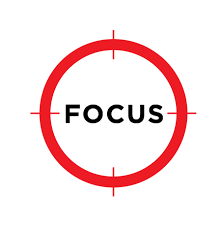Can I ask you a question? How do you feel about setting New Year’s resolutions? Do you get excited about them? Do they get you inspired and ready to take action? Do they put goosebumps on your arms?
If you are like most people, this is not a black and white question! You know what I am talking about, don’t you? There is a part of you that is really excited about your resolution, and you get excited when you think about it. It’s that part of you that says “oh boy…let me at it and get out of my way because I am going to crush it this year!”
But then if you are honest with yourself, there is another part of you that absolutely hates setting New Year’s resolutions or even goals in general. This part of you feels anxious and secretly doubtful about your resolution. You feel stressed just thinking about it, but somehow and in some way you feel obligated to follow through because you “should,” but not because you want to.
So goes the battle between your higher self and that lower part of you that kicks and screams against it. To make matters worse, US News reports that 80% of resolutions are laid to rest by mid-February!
WHY does this happen?
To answer this question, I want you to imagine stepping into a 1975 Ford Pinto and slamming your lead foot onto the gas petal. Are you in for the ride of your life? Hell no. In fact, if you are lucky, you might go zero to sixty in five minutes! Now I want you to imagine stepping into a brand new 2018 Lamborghini. As you slam your foot on the gas, your head is thrown back into the seat and you feel instant exhilaration and raw horsepower.
Now let’s rope this back into goal setting once again. When we set a goal we place that goal in one of two places in our brain and make no mistake about it . . . your goal’s fate is 100% determined by which part of your brain receives the goal.
For simplicities sake, I will call the first part of your brain your Thinking Brain and the second part of your brain the Robotic Brain. Your thinking brain is the part of you that does the following:
-Thinks
-Reasons
-Makes judgement calls
-Uses comparisons and contrast
-Is linear and logical
This is the part of you that actually thinks about your resolution, gets excited about it, and then makes plans for its execution.
Sounds great, right? We should be good-to-go with all of these cool features of the “thinking brain,” right?
If it were only that easy . . .
Your Subconscious Mind: Your Worst Enemy
For all of the wonderful features of the conscious mind, there is a small problem lurking in the background. The problem is that your thinking mind is your conscious mind, and your conscious mind only exerts a measly 4-8% impact on long-term behavior change. In other words, it’s next to worthless UNLESS it is properly directed (more to come in a moment).

This is what most people rely on when setting goals. They are driving their Ford Pinto ever so slowly, approaching their goals until they reach a steep hill upon which they lack the horsepower to climb.
Your subconscious mind is the other part of your brain that I have referred to here as the robotic brain. Why do I call it robotic?
Imagine yourself sitting in front of your computer at work. You are typing away in Excel or Word, and you save your document. The next day, you come back to work and magically you click on the appropriate icon, and your computer pulls up the exact program and the exact words that you wrote the day before.
Your robotic brain works like a computer. It takes in information, processes it, and stores it for later. Throughout your life, your robotic brain or subconscious mind has been taking in different experiences, stimuli, and events, and storing them away.
How does the robotic brain relate to the fate of your New Year’s resolution? Let’s just pretend for a moment that you have set a weight loss goal every year for the last 10 Januarys. Let’s further suppose that you never hit your weight loss goal on any of those years.
In the background, your robotic brain is taking in ALL of your experiences, emotions, conclusions, and meanings of your failed goal. Because your subconscious mind wants to make sense of these events it draws a conclusion that says, “I am not capable of hitting my goals. I have no will power and I am a loser.”
Even though this is an over simplistic example, it happens all of the time, and, as a result, we literally form hundreds of programs that tell us what we are good at, and what we are bad at. This is your Lamborghini, and, depending on its programming, it is taking you full speed towards your goal or away from it.
Now, in case you are wondering WHY this is such a big deal, it comes down to the fact that your robotic brain or subconscious mind is responsible for 94-98% of your long-term behavior change! “Why,” you ask? Because it is running programs in the background that are silently defining “who you are” and “what you are capable of,” and if those programs are giving you a message contrary to your goal, I have some rather disappointing news for you. You will succumb to those programmed beliefs every time; hence, why 80% of us are falling off of the wagon by mid-February every year.
Your Subconscious Mind: From Foe to Friend
So how do we get our subconscious mind on our side? Ironically, we have to use our thinking brain or conscious mind to override the existing negative programming of our subconscious mind. To do this, I want to share some of the most powerful tools that I am aware of to help right the ship.
Step #1: Get Clear & Committed.
I get it. You are probably saying, “Griff that is not new. I have heard trite phrases like that for 30 years now. Don’t you have something new for me?”
Actually . . . NO, and here is why. When I say to get clear on your goals, I mean VERY clear. If it is a fitness goal, I don’t want to hear you say, “I am going to lose weight.” I want DETAILS, baby! How much exactly will you weigh and by when? What will be your bodyfat %? What will you look like? Can you draw me a mental image? How to you feel? Where is your energy?
See the difference!? I won’t spend a lot of time here, but suffice it to say, if you are not clear on this part of your goal setting, you are doomed to fail.
The second part of this first step is to be committed, and, when I say committed, I mean COMMITTED. I have seen hundreds of clients over the years, and I can always tell the ones who are truly committed and those who are only committed to convenience. The former will stay committed through the hardest of times, including tragedy. The latter will fall off the wagon the minute that the going gets tough.
Establishing Threshold Rules
You likely understand this intellectually, but I want you to get this at an emotional level. To do this, I want to introduce you to the concept of “threshold rules.” A threshold rule is a rule that you have deemed unbreakable and unchangeable. A good example is infidelity. Let’s say you are married. Do you wake up each morning and say to yourself, “Hmm, I wonder if I am going to cheat on my spouse today?”
Of course not! But when we set a goal, and we are not 100% committed to it, we give ourselves just a wee bit of leeway and, make no mistake about it, that leeway screws up over each and every time when the going gets tough.
To avoid this, we have to look ourselves in the mirror, state our goal, and jump in with both feet. No leeway, no “convenience clause,” and no BS. Life is going to get tough, and the temptations will come, but YOU my friend are going to get even more committed when this happens. You are setting a threshold rule that will not and cannot be breached!
Step #2: Associate Your Goal With Overwhelming PLEASURE!
How many of us associate personal change with pain?  Answer? Just about all of us. Let’s be real with ourselves, and just admit this one. We set a weight loss goal and then that damn alarm clock goes off at 5:00 a.m. PAIN. We tell ourselves that we are cutting back on the sugar and then we walk by the bakery and smell the sweet aroma. PAIN. We tell ourselves that we want to get stronger and then we find ourselves under a squat bar being told by a personal trainer to give him 15 reps. PAIN.
Answer? Just about all of us. Let’s be real with ourselves, and just admit this one. We set a weight loss goal and then that damn alarm clock goes off at 5:00 a.m. PAIN. We tell ourselves that we are cutting back on the sugar and then we walk by the bakery and smell the sweet aroma. PAIN. We tell ourselves that we want to get stronger and then we find ourselves under a squat bar being told by a personal trainer to give him 15 reps. PAIN.
The problem with associating change with pain is that is does not last! We are biologically wired to avoid pain and seek pleasure, so if we are associating our goals with pain then as I am said before, we are screwed.
You should be thinking of the BENEFITS of your resolutions at least 50-100 times per day if you expect to override your negative programming.
Now, if you are saying, “Wow, I am not sure I can do that. That is a bit much,” please reconsider. You are subconsciously running negative programing in excess of 100 times daily, and, in order, to overcome it, you must give your subconscious mind more pleasant food to feast on.
Instead, here is what I want you to do. I want you to create a mental image of what the end result of your resolution is (step #1). If, for example, you want to lose 50 lbs., I want you to vividly imagine what you would look and feel like if you were that weight now. Step into that body and literally feel what it is like to be this new person. Let yourself be a kid again, and indulge in this pleasant mental image.
Think of all of the benefits that your goal is going to bring into your life, and, when you are tempted to get negative or focus how hard things are, go BACK to all of the benefits that are coming your way. Force yourself to think of the positive things even if it feels uncomfortable. Remember, it only feels uncomfortable because your robotic brain is trying to play out old sabotaging programs, and you are now challenging them. You will get over this. Just give it some time!
Step # 3: Add Emotion
I want you to get passionate about your goal. No, not just hopeful, not just excited. I want you to get downright giddy about your goal to the point where I can hear, smell, and see your passion. If you are setting a goal that you cannot get passionate about, I can again reassure you that you will be screwed. Why? Because the subconscious mind responds to positive emotion.
I want you to smile when you think about your resolution. I want you to skip around the house when thinking about your resolution, and I want you to tell everybody else about it because you are so excited about it.
If you cannot garner this kind of emotion, then it is time to go back to square one and start over. Look at anybody that succeeds long term, and this step will become overwhelmingly clear. The same can be said of those that fail.
Step #4: Be Clear on Your Limiting Beliefs and Then REPLACE Them
This step is an absolute game-changer and cannot be overlooked. Here is what I want you to do. Pick a quiet place where you can escape and take along a notepad. Sit quietly for at least 5 minutes in meditative state and allow your mind to clear. When you are relaxed and thinking clearly, I want you to ask yourself this powerful question:

“What is Currently Holding Me Back from Achieving My Goals?”
I then want you to write down the first things that come to your mind. Absolutely NO filtering here. You might find things coming to mind, like time, relationships, work, etc. Write them ALL down!
Now I want you to pool all of them together and begin to write what I call “oppositional statements.” Many people call these affirmations. Simply stated, you are finding a limiting belief and replacing it with a more positive statement that will in time become your new belief.
For example, if you write down a negative belief that states that you have no willpower, you would replace it with, “I make time for the things that are most important to me.” Assuming that you did Step #1, this will be a no-brainer at this point. Be creative in this process, and listen to what your heart (not your mind) tells you.
This is an ongoing process that needs our continual attention to ensure that existing negative beliefs are not creeping into the space of our intended resolution. Here is a formula that will ensure subconscious change:
Vision + Positive emotion + Repetition = Changed Subconscious Programming
= Changed Lifestyle
Step #5: Become Obsessed & Then . . . DETACH
I know. I know. That word has a negative connotation but let’s get real: It works. Why? Because when we get obsessed, we get hyper focused, and that is exactly what we need! I want you to literally think of your goals as often as possible and again, get excited about them!
The paradox comes into play here with detachment. Although I am all about writing your goals down and getting nitty gritty with the details, it is also important to understand that your goals DO NOT DEFINE YOU! I have seen so many people, including myself, fall into deep states of depression because they don’t hit a goal!
There is absolutely no need for this, and I would caution you to invest your self-worth into any goal. In eastern philosophy, Taoist masters encourage us to learn the art of detachment. It is okay to have a goal, and it is great to be all in, but when we fall down, let’s not judge ourselves and label ourselves; that’s called attachment, and it will screw us over every time.
Well, there you have it, my friends! If you would like a more comprehensive guide that will help you reshape your subconscious, mind please take a look at my book Exorcising Your Excuses on Amazon here:
It will take you on a journey that will help you reshape your thinking and your outcomes. I am so excited for you this year of 2018, and I want to hear your stories of achievement! Please share your thoughts and share this with a friend if you feel like it would help them.
Most importantly always remember . . .
Life is good!

